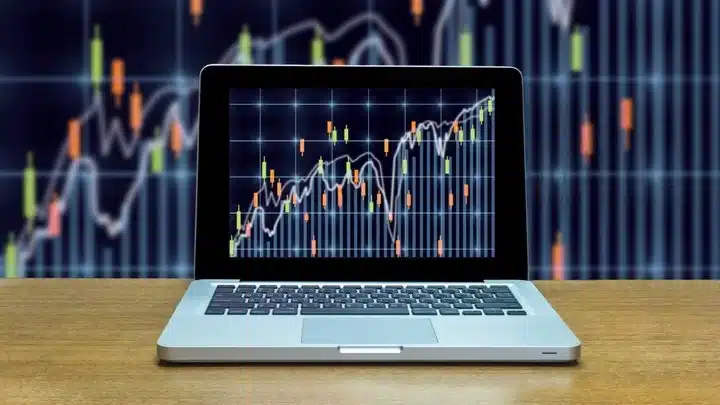In the ever-evolving landscape of financial markets, trading software has become an indispensable tool for both novice investors and seasoned professionals.
The rapid pace of technological advancements has ushered in a new era of trading, where sophisticated algorithms and real-time data analysis empower traders to make informed decisions.
In this blog, we’ll explore the world of trading software from both a beginner’s and advanced user’s perspective, shedding light on the benefits and challenges associated with these powerful tools.
The Beginner’s Journey: Navigating the Trading Software Landscape
For beginners, the sheer diversity of trading software available in the market can be overwhelming. The first step is to understand the primary functions of trading software and how it aligns with individual trading goals.
Most entry-level traders benefit from platforms, like FXIFY, that offer user-friendly interfaces, educational resources, and a supportive community to help build beginner’s knowledge.

1. User-Friendly Interfaces: Breaking Down the Barriers
The hallmark of effective trading software for beginners is a user-friendly interface. Platforms like MetaTrader, Thinkorswim, and TradingView are designed to simplify the trading experience, making it accessible to individuals with limited technical expertise.
Graphical representations of market data, intuitive navigation, and easy order placement are essential features that aid beginners in understanding the dynamics of the market.
2. Educational Resources: Empowering Novice Traders
Successful trading requires more than just clicking buy or sell buttons. Educational resources integrated into trading software, such as tutorials, webinars, and market analysis, play a crucial role in building a beginner’s understanding of financial markets.
Novice traders can benefit from these resources to learn about technical analysis, risk management, and trading strategies.
3. Supportive Community: Learning from Peers
Many trading platforms foster a sense of community among their users. Beginner traders can engage with more experienced individuals, ask questions, and share insights.
This collaborative environment provides an excellent opportunity for learning from others’ experiences, gaining valuable tips, and staying updated on market trends.
The Journey of An Advanced Trader: Understanding Algorithms and Analytics
As traders gain experience and confidence, their needs evolve, requiring more advanced features and analytical tools.
Trading software for advanced users goes beyond basic functionality, offering a suite of tools for in-depth analysis, algorithmic trading, and risk management.
1. Advanced Charting and Analysis Tools: Seeing Beyond the Surface
Advanced traders rely on sophisticated charting tools that enable them to dissect market movements with precision.
Candlestick patterns, technical indicators, and custom analytical tools empower traders to identify trends, patterns, and potential entry or exit points. Platforms like NinjaTrader and TradeStation are renowned for their advanced charting capabilities.
2. Algorithmic Trading: Automating the Game
Algorithmic or automated trading is a game-changer for advanced users. Trading software allows them to create and implement complex algorithms that automatically execute trades based on predefined criteria.
This not only enhances efficiency but also minimises emotional biases in decision-making. Algorithmic trading platforms like QuantConnect and AlgoTrader are popular choices among advanced traders.
3. Risk Management Features: Safeguarding Investments
Preserving capital is a paramount concern for advanced traders. Trading software with robust risk management features, such as stop-loss orders, position sizing tools, and risk-reward ratio calculators, provides an extra layer of protection. These features empower traders to set predefined parameters, ensuring disciplined and strategic trading.
Challenges and Considerations for Both Beginners and Advanced Users
While trading software offers a myriad of benefits, users at all levels must be aware of potential challenges. Security concerns, system outages, and the risk of over-reliance on automation are aspects that merit careful consideration.
Beginners should start with platforms that offer demo accounts to practice without real financial risk, while advanced users must stay vigilant and continually adapt their strategies to evolving market conditions.
Trade With Confidence
In conclusion, trading software serves as a bridge between traders and the dynamic world of financial markets. For beginners, it provides a gateway to understanding market dynamics and executing trades with ease.
Advanced users, on the other hand, leverage sophisticated tools to gain a competitive edge and automate their trading strategies. Regardless of skill level, the key lies in choosing the right trading software that aligns with individual goals, preferences, and risk tolerance.
Continuous learning, adaptability, and a disciplined approach are essential for success in the ever-evolving world of trading.
Tyler Hoffman is a versatile writer and blogger who thrives on the excitement of exploring an array of topics. With a keen interest in everything from technology and travel to health and lifestyle, Tyler crafts engaging content that appeals to a diverse audience. His writing style is both informative and entertaining, making complex subjects easy to understand.
Contact email: [email protected]
